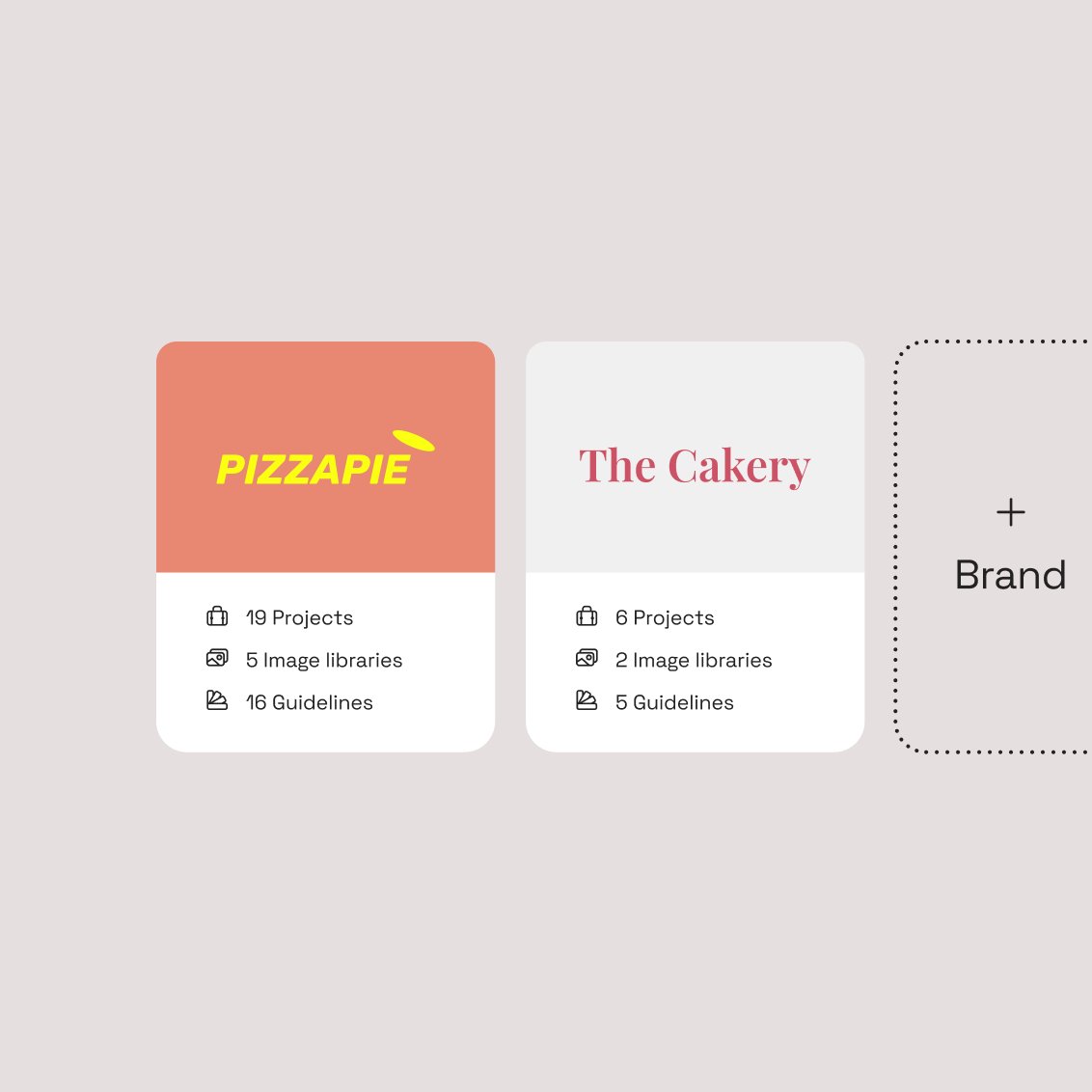Many global brands struggle with the same challenge: maintaining consistency across markets while accommodating necessary local adaptation.
Picture it: Your new global campaign launches. The creative team is proud, and your messaging is spot-on, but then implementation begins. Germany interprets the guidelines differently than Japan. Brazil uses an outdated logo. Australia can't find the latest product images. And suddenly, what should be a cohesive global presence fragments into disconnected local interpretations — diminishing your impact and diluting your investment.
If these scenarios sound familiar, you're not alone.
For global brands, the stakes are significant. A major joint study by Frontify and WARC, titled Local, global or glocal: Effective brand governance in the age of marketing transformation, examines how teams navigate these challenges across markets and channels. In the report, one creative director described the process as “putting in so much love and effort, then handing your baby over to become bastardized.” A Frontify executive noted that “brand inconsistency and lack of efficiency can be a money pit.”
Research by BrandZ — cited in Local, global or glocal — shows that brands with strong global governance outpace their locally oriented competitors by up to 20% in year-on-year value growth. Yet, without robust systems, the challenge remains formidable.
“During periods of economic recession, the importance of global branding is emphasized,” explained Antonis Kocheilas, Global CEO of Ogilvy. “Marketers need to create economies of scale with less money to spend.”
Navigating a fragmented world
According to a CSA Research survey of 8,700 customers across 29 countries, 76% of online shoppers prefer products marketed in their language, and 40% won’t buy from a foreign language website. These findings highlight the challenge: Global consistency and local relevance are vital for success.
Brand governance itself is undergoing a profound shift. “It used to mean a small team of brand experts ruling over a brand with an iron fist,” stated the report. “Now, businesses share brand ownership with everyone in their organization — and their agency partners.”
In the words of Caitriona Henry, OMD’s Global Lead and Strategy Partner: “The real challenge is how to have freedom within a framework.”

Harnessing the power of digital asset management (DAM)
Finding the right approach begins with understanding your organizational options. Most brands adopt one of three approaches to managing their global presence.
- A localized approach gives markets autonomy to produce their own assets with minimal guidance from HQ.
- A more centralized model puts the onus on global headquarters to create most assets for local translation.
- The increasingly popular glocalized hybrid model balances global ideas with local execution.
“We’ve moved from a world where we would create a global campaign and carefully adapt it to run in at least 10 countries. It required a lot of investment and time,” explained Tati Lindenberg, Unilever's VP Marketing. “Now, we create a master playbook to set the campaign’s tonality and then hand it over to the markets, who are equipped to do it faster and better.”
At the core of successful global brand management lies a robust DAM system that serves as the single source of truth for an organization. A well-implemented solution delivers multiple strategic advantages:
- Creates clear taxonomy for all marketing materials
- Controls access based on roles and permissions
- Maintains version history to prevent outdated asset usage
- Eliminates wasteful duplicate assets across markets and teams
Most importantly, a properly implemented DAM ensures more consistent and effective brand adoption while enabling higher-value work. The figures speak for themselves: According to a Forrester total economic impact study cited in the Local, global or glocal report, Frontify's brand management platform delivers an impressive 367% ROI.

How E.ON centralized its brand management
E.ON’s experience demonstrates how a centralized DAM can transform brand management across a complex global organization. As one of Europe’s largest energy companies — with over 78,000 employees in 13 countries — E.ON faced significant challenges during the development and launch of its updated brand platform, Making New Energy Work.
“In the digital world, it’s particularly important for us to create a coherent brand experience across different touchpoints and regions,” explained Head of UX Holger Castritius.
Previously, E.ON had relied on static PDF guidelines and struggled with scattered assets, inconsistent branding, and inefficient collaboration. Now, the teams are supported by a centralized brand management system that evolves with their needs.
Rather than perfecting every detail pre-launch, E.ON adopted an “always beta” approach that enables continuous improvement. With Frontify’s cloud-based solution as a foundation, guidelines and assets can be updated and distributed quickly to ensure alignment. “It’s raised efficiency and transparency, bringing a new level of ease to projects involving multiple teams,” revealed Castritius.
Building a strategic brand management framework
For CMOs and brand leaders, the financial impact of effective brand governance extends far beyond aesthetic consistency. According to The Truth About Global Brands — a study by McCann referenced in the Frontify/WARC report — 85% of surveyed consumers believe global brands have the power to make the world better. This is a testament to the strategic importance of consistent, value-driven brand expression.

To capitalize on this potential, decision-makers must implement a systematic approach:
- Select the appropriate model (localized, centralized, or glocalized) based on the brand’s portfolio complexity and organizational structure.
- Establish governance frameworks to define what’s standardized and what’s adaptable.
- Invest in technology infrastructure that enables collaboration at scale.
- Implement measurement systems to monitor consistency and business impact.
As Simon Gregory, Joint Chief Strategy Officer at BBH, advised: “Work out what's fixed and what’s flexible. Apply the central idea whilst overlaying local insight.”
By investing in a centralized brand management platform that balances global consistency with local adaptation, organizations can transform what was once an administrative challenge into a genuine competitive advantage. This setup enables scalable collaboration while integrating systems that track consistency and quantifiable ROI.
Strategic brand governance isn’t just about visual uniformity. It’s about creating a framework that empowers teams, accelerates time to market, and delivers measurable financial returns across your markets.
Ready to streamline your global brand management? Request a demo to see how Frontify can empower your teams.


